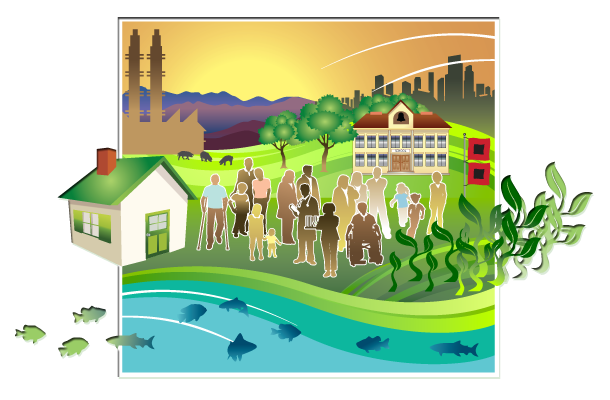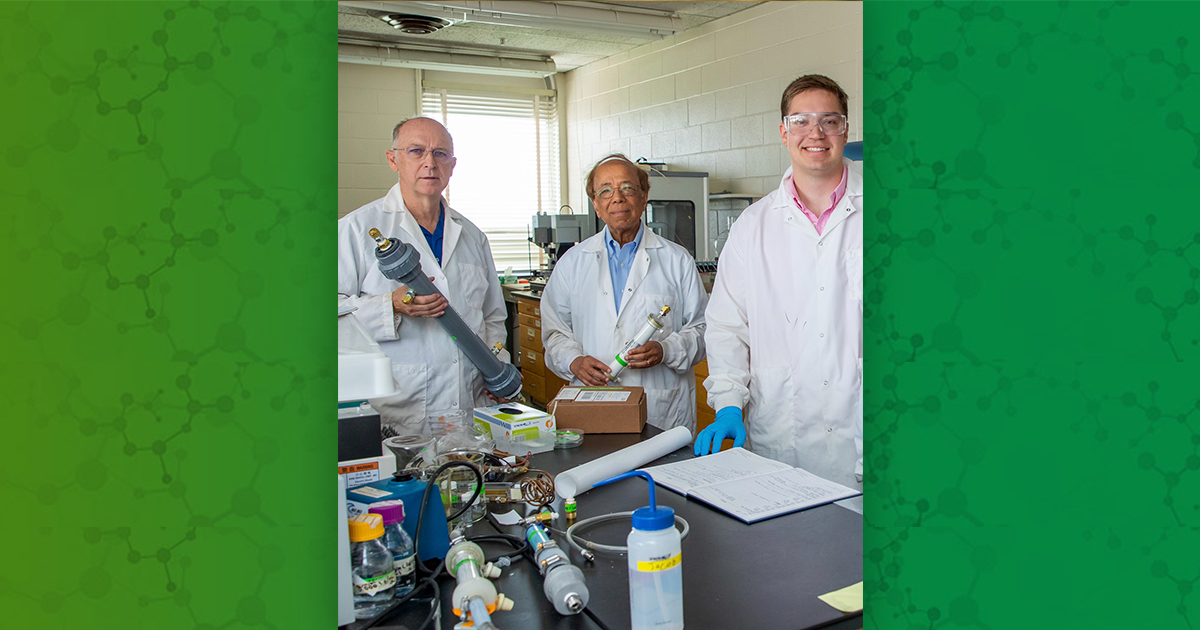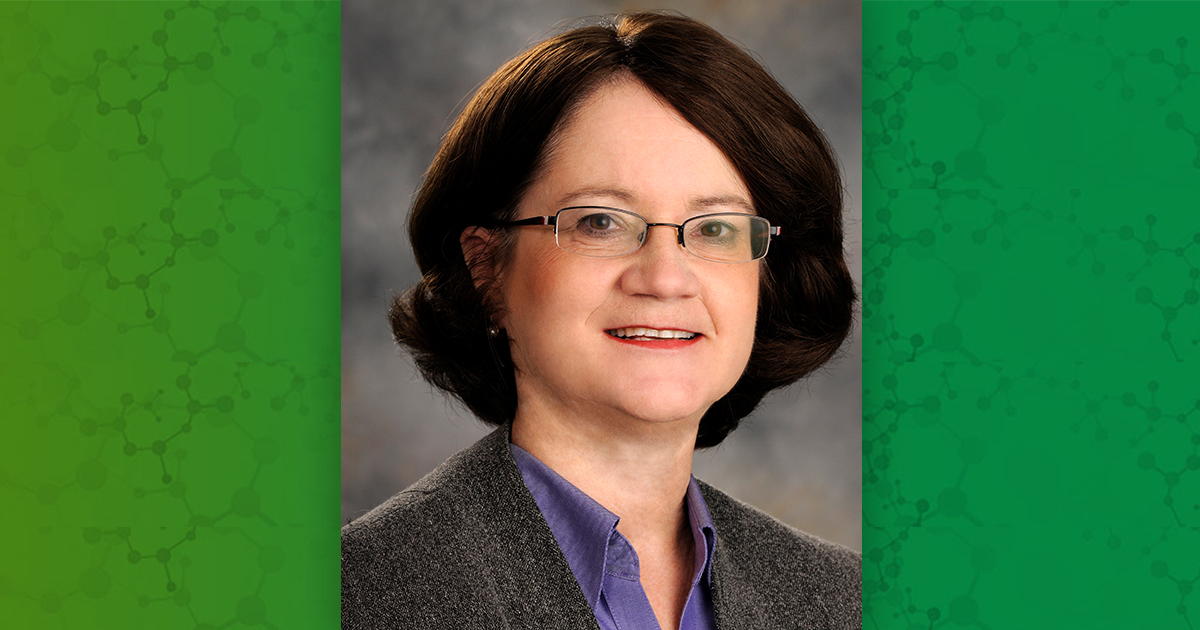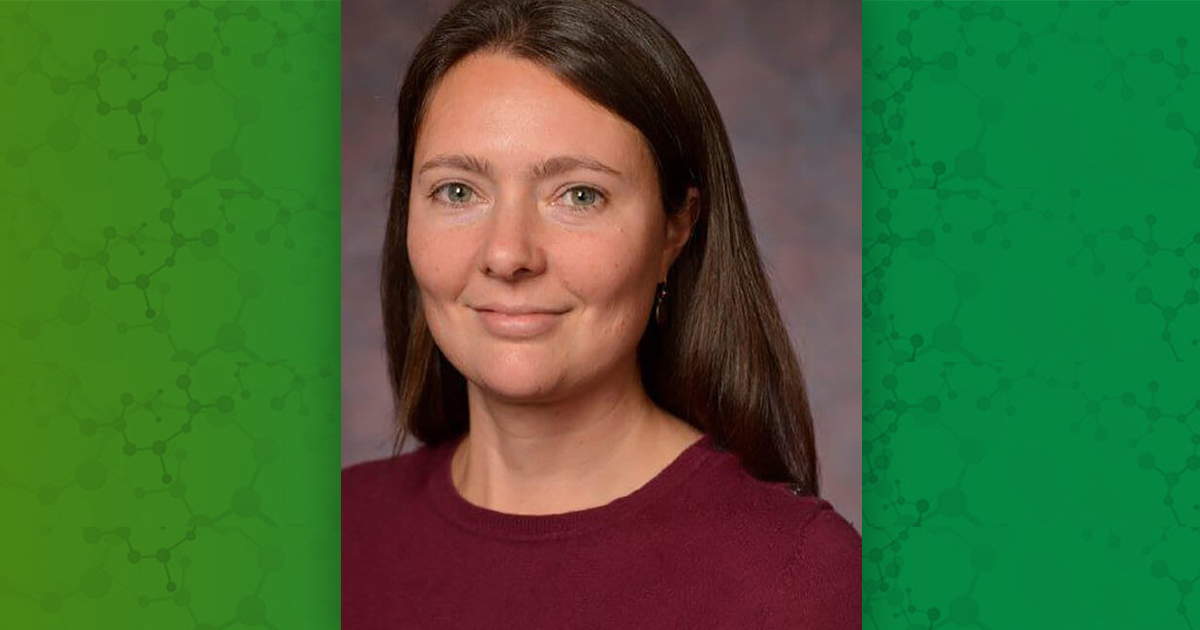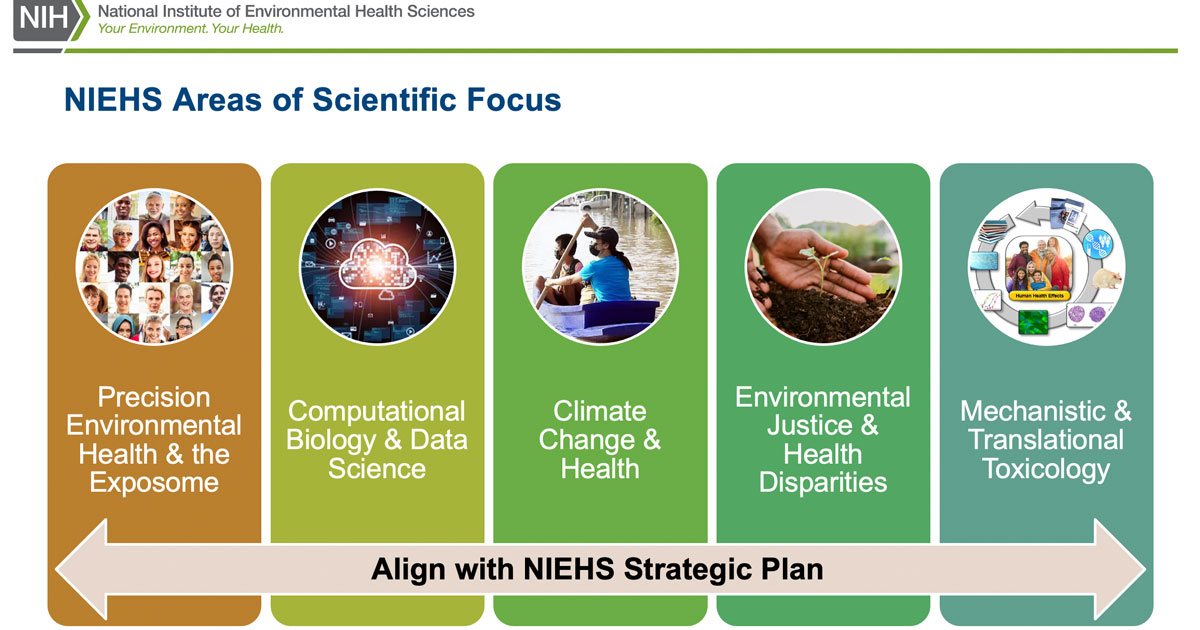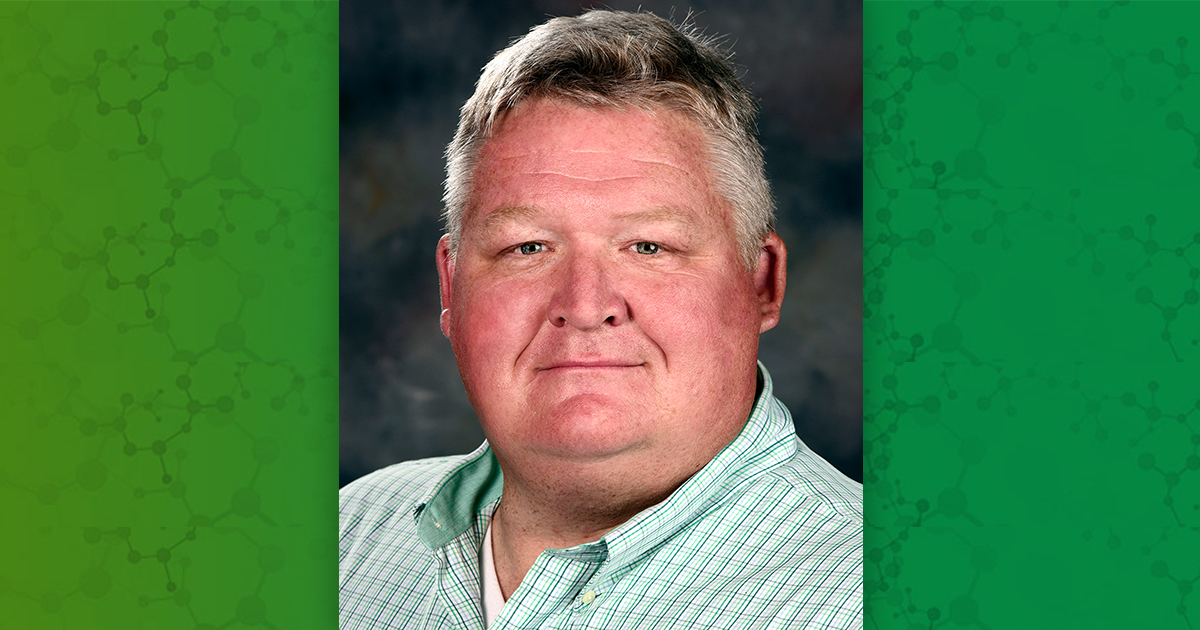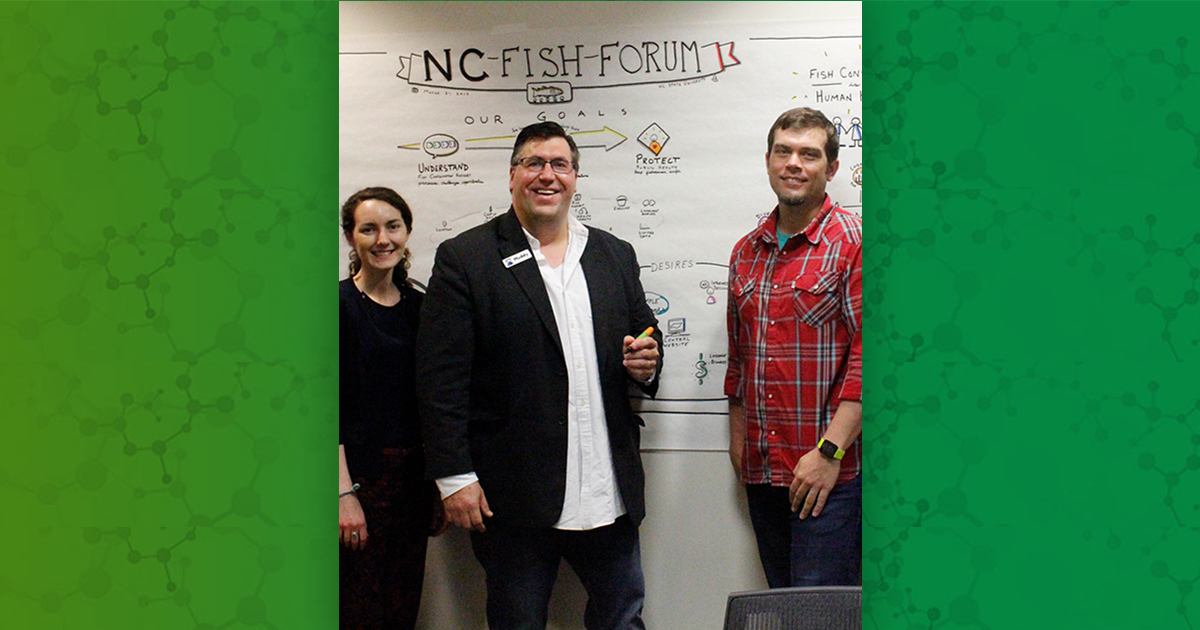Quickly Reporting Back Water Testing Results After a Wildfire
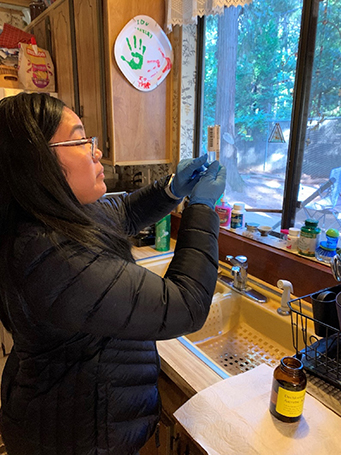
Kathreen “Nica” Daria of the Public Health Institute samples water from a Paradise household. (Photo courtesy of Gina Solomon)
Communicating environmental health information quickly after a disaster is critical and allows residents to take protective actions against harmful environmental exposures. When residents began to return to the town of Paradise, California, after evacuations caused by the devastating 2018 Camp Fire, they were unsure whether it was safe to use the tap water. Community-wide sampling from local water utilities had found contamination in the public water supply, but NIEHS-funded researchers at the University of California, San Francisco and the Public Health Institute were interested in sampling that would provide households with their own water results. A recent paper describes how the researchers developed and implemented this strategy by partnering with local organizations and community leaders.
“Our team’s NIEHS Disaster Research Response funding enabled us to work with the Paradise community soon after residents began to return,” reflected Gina Solomon, M.D., M.P.H., principal investigator of this project. “In a highly accelerated timeframe, we were able to recruit participants, sample household water supplies, and develop an effective communications framework that empowered residents to make decisions relevant to their own health.”
Testing for Water Contamination After a Wildfire
The research team aimed to provide residents of each home with water quality results and actionable information about ways to reduce exposure to harmful contaminants. Researchers recruited residents through a variety of channels, such as a community meeting, flyers, social media, email, and door-to-door visits. Local and state organizations also supported recruitment. For example, the California Office of Emergency Services and the local water utility hosted a community meeting attended by over 100 residents. The community meeting also served as a way for researchers to directly hear residents’ concerns and use their feedback to tailor communications materials. Residents of 136 homes, or roughly 10% of all homes that remained after the fire, participated in the study.
The researchers returned results to participants within two weeks of receiving the results from the laboratory. The rapid timeline was important to meet the community’s need to have actionable information in a timely manner.
“We had previously worked with Tracking California on community environmental health concerns. We further developed partnerships with the California Water Resources Control Board’s Division of Drinking Water, The North Valley Community Foundation, Paradise Irrigation District, and the University of California Davis Environmental Health Center. All these organizations helped to recruit residents for the study and helped develop and test communications materials,” stated Solomon. “In the aftermath of a disaster, it is critical to respond to the community’s needs and earn their trust to return reliable and useful results.”
Developing a Framework to Return Results to Residents
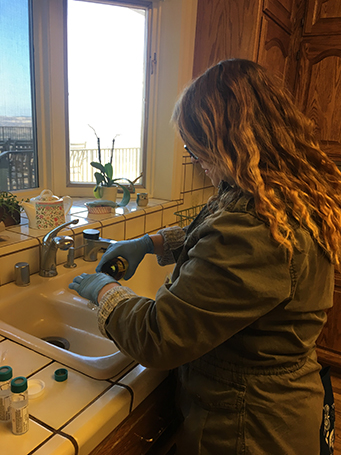
Kelsa Lowe, a graduate student at the University of California Davis, takes water samples at a home in Paradise. (Photo courtesy of Gina Solomon)
This intervention reflects a new development in crisis and disaster communication in that results needed to be individualized rather than community-wide. Therefore, researchers developed a framework that incorporated aspects of individual results and crisis communication while also considering the disaster context by communicating with first responders and avoiding interference with recovery efforts. Researchers also prioritized trauma-informed communications and personally connected with residents through household visits which included sampling and personalized communications. Overall, the framework met the community’s needs to have accessible information in a timely manner.
The research team sent result reports together with additional information, including fact sheets for each chemical detected in the household’s water sample; responses to FAQs raised during the community meeting; and an explanation of how the researchers’ testing methods compared to those of the local utilities in order to reduce confusion from discrepancies in the data.
“As is often the case in disaster communication, we were unable to fully pilot test materials given the short timeline. However, we used best practices and lessons learned from the community to develop reliable information that met their needs,” reflected Julie Von Behren, M.P.H., collaborating researcher on this project. “Working quickly like this, we also learned we had to be adaptive. For example, we made fact sheets on common contaminants in parallel with the sampling but had to make new ones for unanticipated contaminants. But the effort that went into providing so many details went a long way to helping the community take informed actions on their water use.”
When water sampling results came in, researchers categorized each household based on the severity of contamination. Households with water contamination above or near regulatory limits were prioritized and received information immediately, along with an offer of follow-up testing. While information packets were sent to all participants, residents could also attend a community meeting about the results and could choose to discuss results with the researchers either by phone or in-person.
Determining Success of Returning Results to Residents
Researchers surveyed participants about their water usage, concerns about contaminants, and how they felt about the research and communications process. Before receiving results, 47% of Paradise residents and 33% of nearby residents reported they were very worried about the safety of their water. After receiving results and communications materials, 56% of respondents were much less worried about the water, and 21% were slightly less worried, because they found out their own water supply was safe. About one-quarter of participants reported taking an action related to water usage after the study, such as installing a water filter. Over 83% of respondents stated the materials were understandable and 87% found them useful.
“The range of activities taken after receiving the results is consistent with the fact that each household had different contaminant levels,” stated Von Behren. “The benefit of this study and our individualized approach is that we were able to communicate information depending on a household’s circumstances.”
The researchers uploaded their questionnaires and other materials related to returning results to the NIEHS Disaster Research Response (DR2) Resources Portal so that other researchers studying the aftermath of wildfires or drinking water contamination have materials they can rapidly repurpose.
“Disaster results communication research is a developing field,” stated Solomon. “Principles of trauma-informed community engagement need to be incorporated into tailored communications, all under extreme time pressure. The resources we created can help others incorporate these principles effectively.”
Community-oriented Solutions Can Alleviate Mental Health Effects from Wildfire Smoke
A team of NIEHS-funded researchers found that wildfire smoke affects people’s mental health and well-being. In their paper , published in January 2022, they present data from interviews and focus groups with community members in a rural Washington area that had been affected by wildfire smoke. Community members said they had heightened anxiety, depression, isolation, a lack of motivation, and respiratory issues after wildfire smoke exposure. These effects were more pronounced among people who had outdoor occupations, lower income levels, or preexisting health conditions.
Proposed solutions were aimed at promoting stress reduction (for example, meditation lessons), physical protection (for example, increased distribution of air filters and development of community clean air spaces), and community cohesion (for example, hosting social gatherings and identifying opportunities for volunteering). The research team believes these community-led solutions can bolster resilience after wildfire smoke events. A researcher on the team, Nicole Errett, Ph.D., studies public health emergency preparedness, the health impacts of disasters, and community resilience at the University of Washington. You can read more about her work in the April 2021 PEPH newsletter.
Environmental Career Worker Training Program Joins Justice40 Initiative
The Environmental Career Worker Training Program was selected as one of 13 HHS programs to participate in the Justice40 Initiative in June 2022. Part of the NIEHS Worker Training Program, the program provides opportunities for individuals from disadvantaged communities to obtain careers in environmental cleanup, hazardous waste removal, emergency response, and construction. The program has a strong history of helping unemployed, homeless, and formerly incarcerated people find good jobs.
PEPH podcasts celebrating the program’s 25th anniversary – NIEHS Program Builds Careers, Changes Lives: Part I and Part II – feature two program participants who discuss their experiences and career paths.
Justice40, created by executive order in early 2021, aims to ensure that federal agencies work with states and local communities to deliver 40% of the overall benefits of relevant federal investments to disadvantaged communities. With its programs included in Justice40, HHS hopes to help communities find relief from pollution and climate-related events that affect human health.
Environmental Health Equity and Implementation Science Meeting Materials Available
Environmental exposures can disproportionately affect people from racial and ethnic minority groups and disadvantaged communities. To address these disparities, interventions need to be equitably implemented. In winter 2022, NIEHS hosted a workshop, Advancing Environmental Health Equity Through Implementation Science, which explored how environmental health scientists can develop, adapt, and implement interventions, practices, and policies to prevent or mitigate harmful environmental exposures. The workshop covered what implementation science is, why it matters for environmental health and environmental justice research, evidence-based prevention and interventions, emerging environmental health issues, and community and multi-sector partnerships. The meeting materials, including the slides, resource list, final report, and videos (day one and day two) are now available.
U.S. Environmental Protection Agency Air Monitoring Equipment Program Helps Protect Public
The U.S. Environmental Protection Agency’s Wildfire Smoke Air Monitoring Response Technology program, which started in 2021, will continue in 2022. The program was designed to quickly get air quality information to public health officials to enable them to better protect the public from the health risks of smoke exposure. It also addresses data gaps in air quality measures by providing equipment to areas that may not have monitoring stations. Through the program, state, local, and tribal air organizations can borrow different air quality measurement systems. One system allows people to map air quality while driving. The program also loans equipment to the U.S. Forest Service-led Interagency Wildland Fire Air Quality Response Program, which addresses risks posed by wildland fire smoke to the public and fire personnel. Interested parties can fill out a request form for air monitors.
United Nations Report Describes How Governance Systems Can Prepare for Increased Disaster Risk
The United Nations (UN) Office for Disaster Risk Reduction released its 2022 global assessment report, Our World at Risk: Transforming Governance for a Resilient Future. The report focuses on how governance systems can evolve to better address systemic risks of the future, including the climate emergency.
The report warns that human activity contributes to an increasing number of disasters across the world and that risk creation is growing faster than risk reduction. However, it also highlights the successes of risk reduction strategies in reducing the impact of disasters on people. The report was released ahead of the UN’s Global Platform for Disaster Risk Reduction meeting in May, which explored ways to address drivers of risk, such as poverty and inequality, and strengthen disaster risk governance.
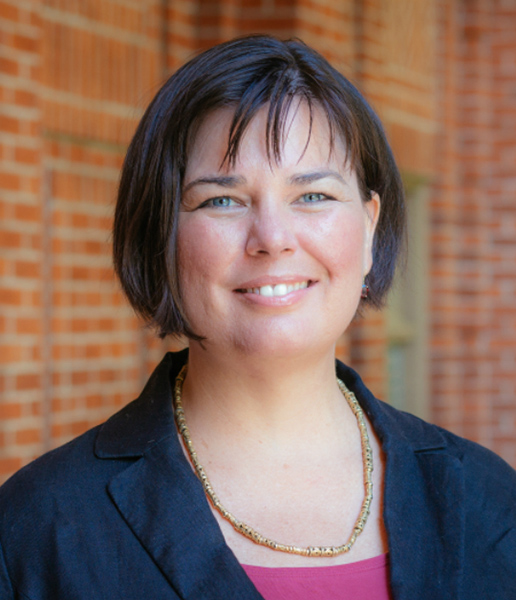
PEPH Grantee Highlight
Molly Kile, Sc.D.
Molly Kile, Sc.D., is passionate about reducing environmental exposure threats to some of the most vulnerable populations, including children and families living in areas with limited resources. As an environmental epidemiologist at Oregon State University, she studies the health impacts of early life exposures and the social and individual factors that mediate exposure responses. She conducts community-based research on the effect of early life exposure to metals and flame-retardant chemicals, well water safety, and air quality and chemical contamination.
Funding Opportunities
Notice of Special Interest (NOSI): Climate Change and Health
Encourages applications that address the impact of climate change on health and well-being over the life course, including the health implications of climate change in the United States and globally. NIEHS is leading the NIH-wide Climate Change and Health Initiative, of which this NOSI is a part. NIEHS is interested in research that addresses the impact of climate change on environmental health and innovative approaches to the development of prevention and intervention strategies to reduce the impacts of climate change on environmental health, particularly in communities most susceptible to these impacts. Researchers who wish to submit applications regarding this NOSI must select from a list of funding opportunity announcements sponsored by various NIH institutes and centers. Researchers interested in applying for climate change-related Small Business Innovation Research funding can see Notice of Special Interest (NOSI): Innovative Technologies for Research on Climate Change and Human Health (R43/R44 Small Business Innovation Research (R43/R44 Clinical Trial Optional). Researchers interested in applying for climate change-related Small Business Technology Transfer funding can see Notice of Special Interest (NOSI): Innovative Technologies for Research on Climate Change and Human Health Small Business Technology Transfer (R41/R42 Clinical Trial Optional).
Deadlines: August 8, 2022; October 5, 2022; November 3, 2022
SBIR E-Learning for HAZMAT and Emergency Response (R43/R44 Clinical Trial Not Allowed)
Encourages Small Business Innovation Research (SBIR) grant applications from small business concerns that propose to further the development of Advanced Technology Training (ATT) products for the health and safety training of hazardous materials (HAZMAT) workers; waste treatment personnel; skilled support personnel associated with an emergency/disaster; emergency responders in biosafety response, infectious disease training and cleanup; emergency responders in disasters and resiliency training; and for ATT tools to assist in responding to environmental disasters. The major objective of the NIEHS Worker Training Program (WTP) is to prevent work related harm by assisting in the training of workers in how best to protect themselves and their communities from exposure to hazardous materials. NIEHS encourages applicants to review the SBIR E-Learning for HAZMAT Program, to pursue partnerships and collaboration with awardees of the WTP program, and to design new technology-enhanced training methods or e-Learning products that can enhance the existing NIEHS supported curricula and training programs while adhering to the Minimum Health and Safety Training Criteria: Guidance for Hazardous Waste Operations and Emergency Response (HAZWOPER) and HAZWOPER-Supporting Training.
Deadline: July 30, 2021
Letter of Intent: June 30, 2021
Research Coordinating Center to Support Climate Change and Health Community of Practice (U24 Clinical Trial Not Allowed)
Solicits applications from eligible institutions to develop a Research Coordinating Center (RCC) to support the development of an NIH climate change and health (CCH) community of practice by managing and supporting current and future climate change and health research and capacity building efforts. The RCC will create a robust, inclusive CCH community of practice that fosters collaboration, capacity building, innovation and research that aligns with the NIH CCH initiative. The RCC will offer opportunities for collaboration between multiple disciplines required to conduct solutions-driven research on the health impacts of climate change. Additionally, the RCC seeks to promote inclusion of scientists from diverse backgrounds, including scientists from nationally underrepresented groups (see, Notice of NIH's Interest in Diversity, NOT-OD-20-031), and Historically Black Colleges and Universities, Tribal Colleges and other Minority Serving Institutions in the community of practice. Comprehensive initiative coordination, including supporting services such as data and project management, will be part of the RCC efforts.
Deadline: August 25, 2022
Letter of Intent: July 25, 2022
PHS 2022-2 Omnibus Solicitation of the NIH, CDC and FDA for Small Business Innovation Research Grant Applications (Parent SBIR [R43/R44] Clinical Trial Not Allowed)
Enables U.S.-owned and operated small businesses to conduct research and development that has a strong potential for commercialization. This award and the associated PHS 2022-2 Omnibus Solicitation of the NIH and CDC for Small Business Innovation Research Grant Applications (Parent SBIR [R43/R44] Clinical Trial Required) provide funds for small businesses to stimulate technological innovation in the private sector and strengthen the role of small business in meeting federal research and development needs. The related Small Business Technology Transfer announcements (PHS 2022-2 Omnibus Solicitation of the NIH for Small Business Technology Transfer Grant Applications (Parent STTR [R41/R42] Clinical Trial Not Allowed) and PHS 2022-2 Omnibus Solicitation of the NIH for Small Business Technology Transfer Grant Applications (Parent STTR [R41/R42 Clinical Trial Required)) aim to foster technology transfer through cooperative research and development between small businesses and research institutions.
Deadlines: September 5, 2022; January 5, 2023; April 5, 2023
Accelerating the Pace of Child Health Research Using Existing Data From the Adolescent Brain Cognitive Development (ABCD) Study (R01-clinical Trial Not Allowed)
Supports activities proposing to conduct analyses of existing ABCD Study data to accelerate the pace of research on child health and development, including: cross-sectional and/or longitudinal analyses; development of new or advanced statistical methods; and/or integration of ABCD data with other existing datasets that share common data elements. NIEHS is interested in applications that will use ABCD data resources to examine the contribution of environmental exposures on brain and development and to identify sensitive time windows of development that may confer individual susceptibility and also to identify protective factors that may mitigate environmental-induced changes. An R21 funding opportunity is also open.
Deadlines: June 5, 2022; October 5, 2022; February 5, 2023
Research to Action: Assessing and Addressing Community Exposures to Environmental Contaminants (R01 Clinical Trial Optional)
Encourages multidisciplinary projects to investigate the potential health risks of environmental exposures of concern to a community and to implement an environmental public health action plan based on research findings. Projects supported under this program are expected to employ community-engaged research methods to not only conduct research but also to seamlessly translate research findings into public health action. Check out the Research to Action Currently Funded Grantees webpage for a sense of the types of projects supported through this FOA.
Deadline: January 21, 2020
Research Enhancement Award Program (REAP) for Health Professional Schools and Graduate Schools (R15 Clinical Trial Not Allowed)
The REAP program will enable qualified scientists to receive support for small-scale research projects. It is anticipated that investigators supported under the REAP program will benefit from the opportunity to conduct independent research; that the grantee institution will benefit from a research environment strengthened through REAP grants; and that students at recipient institutions will benefit from exposure to and participation in scientific research in the biomedical sciences so that they consider careers in biomedical research. The REAP funding opportunity emphasizes the engagement and inclusion of health professional, undergraduates, and/or graduate students in research. Since diversity strengthens the research environment, REAP grantees are encouraged to recruit and include students from diverse backgrounds, including those from groups underrepresented in the biomedical research workforce. NIEHS will accept applications describing research projects that will have a defined impact on the environmental health sciences and must have a research focus on exposure-health related responses from environmental agents within the mission interest of the NIEHS.
Deadlines: June 25, 2022; October 25, 2022




